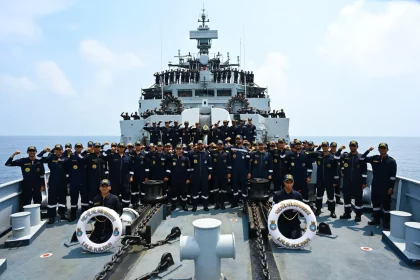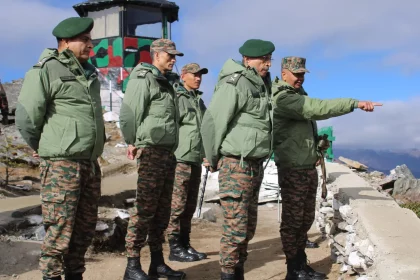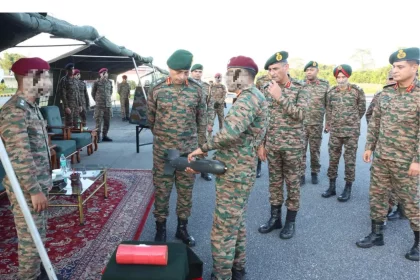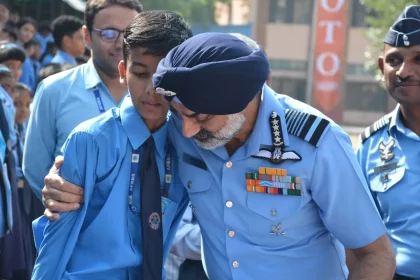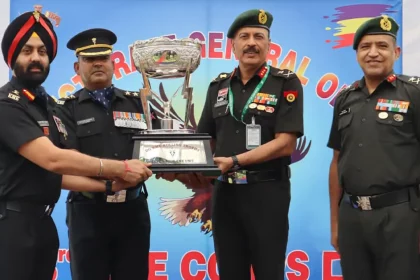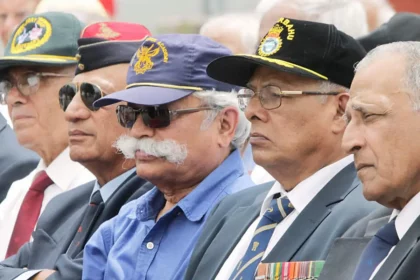INS Kiltan Marks Eight Glorious Years of Service: A Symbol of Indigenous Naval Excellence
INS Kiltan, the indigenously built Kamorta-class anti-submarine corvette of the Indian Navy, celebrated eight years of service, showcasing India’s naval…
Lt Gen RC Tiwari Reviews Operational Readiness of Gajraj Corps and Blazing Sword Division; Inaugurates Gajraj Drone Nursery at Missamari
Lt Gen R.C. Tiwari, Army Commander Eastern Command, reviewed the operational readiness of forward troops and the Blazing Sword Division,…
Lt Gen RC Tiwari Reviews Operational Preparedness of Special Forces Under Gajraj Corps
Lt Gen R.C. Tiwari, Army Commander Eastern Command, reviewed the operational preparedness of Special Forces under Gajraj Corps and lauded…
Air Chief Marshal AP Singh Inspires Students at Air Force Bal Bharti School
Air Chief Marshal A. P. Singh inspired students and staff at Air Force Bal Bharti School with his message on…
Vajr Eagles Conferred the Prestigious DG EME Rolling Trophy 2025 for Best EME Unit of the Indian Army
Chinar Corps’ Vajr Eagles were awarded the DG EME Rolling Trophy 2025 for their exceptional performance in technological innovation, combat…
Defence Minister Approves 100% Hike in Financial Assistance for Ex-Servicemen and Their Dependents
Financial assistance for veterans and their families doubled; move to benefit non-pensioner ESM, widows, and dependents from low-income groups.

